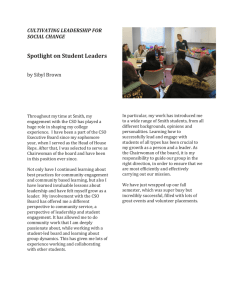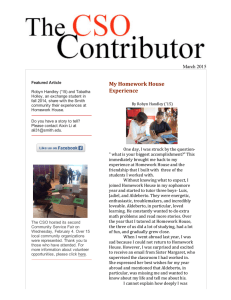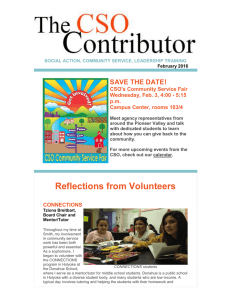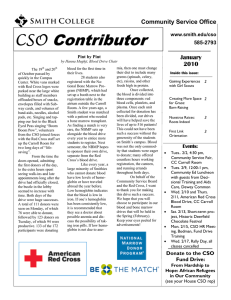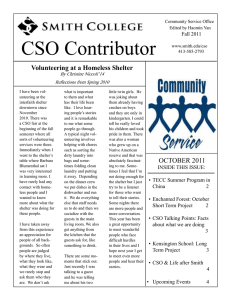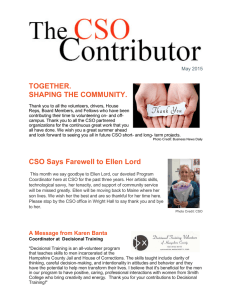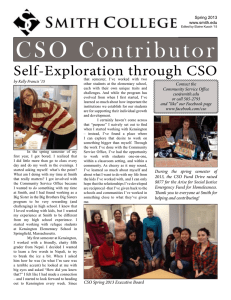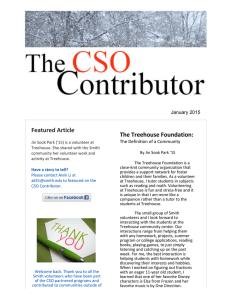COMMUNITY ENGAGEMENT SAFETY POLICIES FOR STUDENTS
advertisement
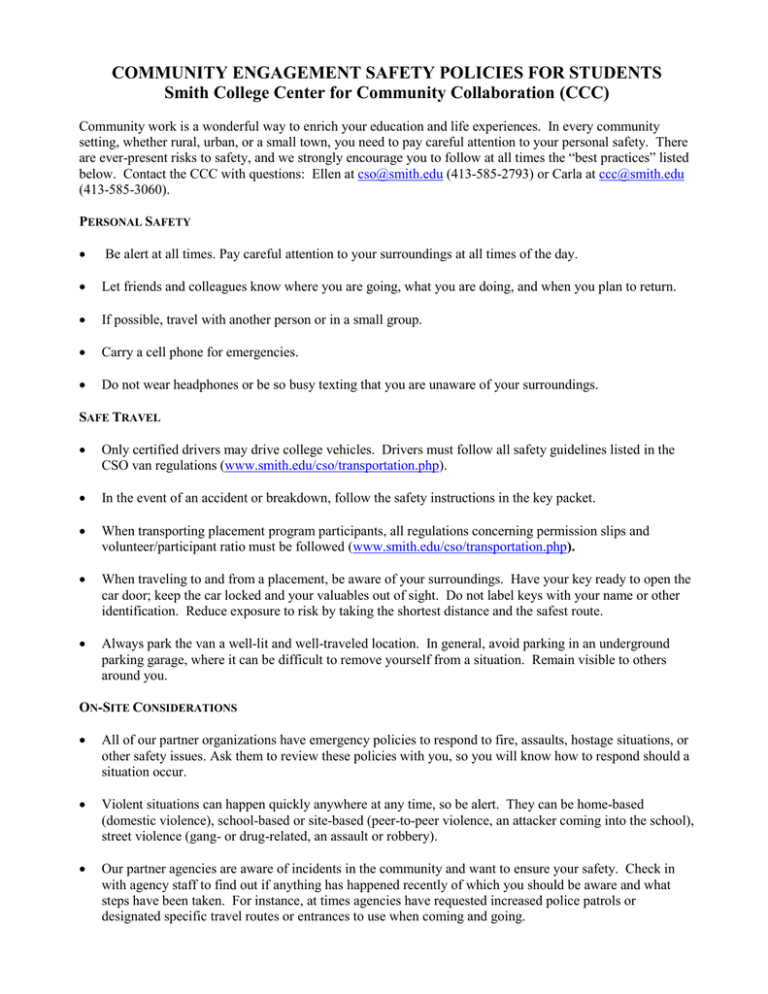
COMMUNITY ENGAGEMENT SAFETY POLICIES FOR STUDENTS Smith College Center for Community Collaboration (CCC) Community work is a wonderful way to enrich your education and life experiences. In every community setting, whether rural, urban, or a small town, you need to pay careful attention to your personal safety. There are ever-present risks to safety, and we strongly encourage you to follow at all times the “best practices” listed below. Contact the CCC with questions: Ellen at cso@smith.edu (413-585-2793) or Carla at ccc@smith.edu (413-585-3060). PERSONAL SAFETY Be alert at all times. Pay careful attention to your surroundings at all times of the day. Let friends and colleagues know where you are going, what you are doing, and when you plan to return. If possible, travel with another person or in a small group. Carry a cell phone for emergencies. Do not wear headphones or be so busy texting that you are unaware of your surroundings. SAFE TRAVEL Only certified drivers may drive college vehicles. Drivers must follow all safety guidelines listed in the CSO van regulations (www.smith.edu/cso/transportation.php). In the event of an accident or breakdown, follow the safety instructions in the key packet. When transporting placement program participants, all regulations concerning permission slips and volunteer/participant ratio must be followed (www.smith.edu/cso/transportation.php). When traveling to and from a placement, be aware of your surroundings. Have your key ready to open the car door; keep the car locked and your valuables out of sight. Do not label keys with your name or other identification. Reduce exposure to risk by taking the shortest distance and the safest route. Always park the van a well-lit and well-traveled location. In general, avoid parking in an underground parking garage, where it can be difficult to remove yourself from a situation. Remain visible to others around you. ON-SITE CONSIDERATIONS All of our partner organizations have emergency policies to respond to fire, assaults, hostage situations, or other safety issues. Ask them to review these policies with you, so you will know how to respond should a situation occur. Violent situations can happen quickly anywhere at any time, so be alert. They can be home-based (domestic violence), school-based or site-based (peer-to-peer violence, an attacker coming into the school), street violence (gang- or drug-related, an assault or robbery). Our partner agencies are aware of incidents in the community and want to ensure your safety. Check in with agency staff to find out if anything has happened recently of which you should be aware and what steps have been taken. For instance, at times agencies have requested increased police patrols or designated specific travel routes or entrances to use when coming and going. Ask agency coordinators for the contact information and locations of Community Policing substations in the community where you are working, so that if you are concerned for your safety you can contact them or go there. In case of emergency, call 911 or Smith College Campus Police (413-585-2490). If someone confronts you in anger or you observe an escalation in tension, do not try to manage it yourself. Immediately inform agency staff so that they can respond. Do not hesitate to get agency staff involved; part of what we are teaching program participants is how to behave appropriately to ensure their safety. If you are out in the community, immediately go to a safe location, such as a store or business. If accosted, do not engage in a confrontation about your personal possessions. They are not worth the risk of getting hurt. Trust your intuition or gut. If you feel unsafe, do what you need to do to ensure your safety. Leave the situation and go to a place that is safe, then let someone in authority know about the situation. Keep CCC staff informed of any situations that occur, so we can support you and provide you with additional resources, if needed. SUGGESTIONS FOR WORKING WITH CHILDREN AFTER A TRAUMATIC SITUATION HAS OCCURRED For some children, violence is a regular occurrence with which they must cope. They may respond in a variety of ways. Their experience does not have to mirror your experience. Wait until a child brings up the subject. Use active listening skills to understand the child. Let the child express the experience. Do not insert yourself or your opinions into the conversation. Be attentive and focused. Do not make judgments about what happened. For example, if a child brings up a situation, the tutor should listen to the child's concern and confirm the child's feelings. If a child says, "Somebody shot at a school bus" the tutor can say, neutrally, “I heard that happened.” If the child says, "I would have been scared, the tutor can say, "Yes, I think I would have been scared too.” Letting the child lead the discussion is key; avoid letting the tutor’s fears compound the child’s. Remember, you are not a counselor and that is not your role. As a mentor and role model, you can be a listener and a support. Do not attempt to serve as a therapist. Children may not be fully aware of a situation, so do not frighten them by making a big deal about it if it is not a big deal for them. If a child brings up the subject, be attentive and focused. Let the child know that you are willing to listen. Let the child talk, and just follow along. Rather than ask how the child feels, say “Tell me about that,” “So how is this for you?” and “What do you think?” Repeat back what the child said, to show that you are listening. Affirm and validate the child’s experience and feelings about the situation. Tell the child it is okay to think and feel whatever the child thinks and feels. Tell the child that these thoughts and feelings make sense, that they are normal, and that it is normal to have a wide range of responses. Encourage the child to speak with program staff or other trusted adults, such as a teacher, neighbor, parent, or school counselor. If you have had such a conversation with a child, let program staff know. For more information, refer to www.nimh.nih.gov/health/publications/helping-children-and-adolescentscope-with-violence-and-disasters-community-members/how-children-react-to-trauma.shtml.
